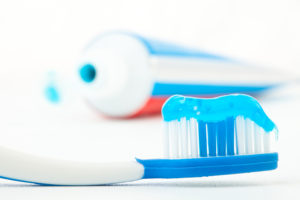Blog
What is Malocclusion and How Can It Affect Me?

One cause of periodontitis that may not be so obvious is what is known as a malocclusion. Occlusion is the term used to describe the position of the teeth as they interdigitate (fit together) when the jaws of the mouth are closed. When the upper teeth and the lower teeth don’t interdigitate properly, you have what is known as a malocclusion or a “bad bite”.
So how can a malocclusion cause periodontitis? To answer that question, let’s first take a rudimentary look at field of dentistry that deals primarily with the positioning of the teeth… orthodontics. Have you ever wondered how a tooth moves orthodontically?
Your bone is made up of cells called osteoclasts and osteoblasts. “Osteo” is the term used when relating to bones. Osteoclasts are cells that “eat” bone, whereas osteoblasts are cells that “build” new bone.
When you place orthodontic bands and brackets on teeth and apply forces with orthodontic wires, the resulting forces cause the roots of teeth to press against certain areas of bone. In other areas of bone around the root, periodontal ligaments (which are comprised mainly of collagen and have some elasticity) place tension on the bone. Remember this… the space between the bone and roots of your teeth, where the periodontal ligaments reside is the periodontal ligament (PDL) space .
For purposes of this book, think of the periodontal ligament space as needing to be a certain width, so when the roots of the teeth press up against bone, the periodontal ligament space is too thin and it needs to expand. As the roots of the teeth are moved away from the bone, the periodontal ligament space becomes too wide, so the space needs to shrink. When changes in the periodontal ligament space occur, they need to be corrected.
Wherever there is pressure on the bone, and the periodontal ligament space is too thin, osteoclasts will eat away bone (so that the PDL space will expand) to recreate the ideal periodontal ligament space width.
Conversely, when the periodontal ligament space is too wide, and the periodontal ligaments are applying tension to the bone, osteoblasts will build new bone (so the PDL space will shrink) to reestablish the periodontal ligament space.
Essentially, the way teeth move orthodontically is that the bone is remodeled around the roots of the teeth (depending upon the pressures and tensions), recreating the ideal periodontal ligament space, and this changes the position of the teeth in the bone.
Now let’s take this fundamental understanding of orthodontics and apply these principles to the field of periodontics. When you have a malocclusion, one tooth hits against its opposing tooth sooner than the rest of the teeth hit against their opposing teeth. When this occurs, you apply excess pressure against the bone as you bite harder to allow the remaining teeth to fully interdigitate. This excess pressure attracts osteoclasts to the region and they begin to eat away at the bone. This allows for the accelerated progression of periodontitis.
Essentially, the causes of periodontitis are sort of like the “chicken and egg” scenario. Most of the time, it’s caused by the progression of bacteria into the sulcus, which creates an infection and produces a pocket. Eventually bone is lost as the pocket advances. (The chicken came first!) This can lead to teeth shifting and a malocclusion that makes the condition worse.
Other times, the malocclusion triggers bone loss, which initiates a pocket and allows a passageway for bacteria to invade, thereby developing an environment suitable for an infection to form. (The egg came first!)
Whether malocclusion is the cause of periodontitis or the result, it needs to be addressed by an occlusal adjustment or occlusal equilibration. These are terms that we use to modify the chewing/biting surfaces of the teeth to alleviate excess pressure and balance the bite in an effort to disperse the osteoclasts and attract osteoblasts to the affected area.
The Causes of Gum Disease

Your mouth is the perfect incubator for bacteria. It’s warm… it’s dark… it’s moist… and as long as you are eating, there’s an endless supply of food for these bacteria to multiply and spread all throughout your mouth.
There are hundreds of different species of bacteria in the human mouth, and they replicate exponentially very rapidly. Fortunately, most of the bacteria in our mouths are helpful. There are only a small number of bacteria in our mouths that are harmful. These are the ones we are most concerned about.
When the bacteria in your mouth combine with leftover food particles from a meal, they form a sticky substance known as plaque. Plaque is constantly forming on your teeth. You’ve been taught since you were a child that you need to remove all of the plaque from your teeth with a toothbrush and floss.
If you don’t remove the plaque from your teeth within a certain period of time, the minerals in your saliva (primarily calcium) will calcify the plaque, causing it to harden and turn into tartar. Another name for tartar is calculus.
Tartar is the enemy of your gums. It is the main cause of this so-called “disease”. While your toothbrush and floss can be somewhat effective in removing plaque, toothbrush bristles and dental floss are completely ineffective at removing tartar. Think of tartar as barnacles on the bottom of a boat… very difficult to remove. It takes the specialized instruments of a skilled dental professional to remove tartar from your teeth.
How long do you think it takes plaque to begin turning into tartar? A month? 3 months? 6 months? If your guess is in that range, you’re not alone. Many people think that since you are supposed to have your teeth professionally cleaned every 3 to 6 months, that must be how long it takes tartar to form on their teeth. The calcification of plaque varies from person to person, but generally speaking; it only takes about 12-72 hours for the plaque on your teeth to begin turning into tartar.
Think about the last time you had your teeth professionally cleaned. Remember how smooth they felt afterwards? How long did that smooth feeling last… about 2 or 3 days? That’s because the plaque was already turning into tartar! Within a week to two weeks, it’s fully hardened. Once tartar has formed on the roots of your teeth, you’re losing the battle against gum decay.
How Tartar Causes “Gum Disease”

This week, let’s take a closer look at how plaque turns into tartar. Between your teeth and gums is a small valley known as the sulcus. When you go to the dentist, your dental hygienist lays you back and begins taking measurements with an instrument known as a periodontal probe to see how deep the sulcus is around each tooth. The hygienist measures 6 points around each tooth to get the most accurate assessment of the health of your gums. A healthy sulcus should measure 3 mm or less, and there should be no bleeding. So, when you hear the hygienist calling out all those numbers, you want the numbers to be ones, twos and threes.
Anything deeper than 3 mm is called a pocket. Pockets are bad. The deeper the pocket; the more severe the problem is. Pockets that measure 4 and 5 mm deep are considered shallow pockets. Whereas pockets measuring 6 mm and above are considered deep pockets.
Your tooth consists of a crown and root. Where the crown and root meet is called the neck of the tooth. In a healthy mouth, the neck of the tooth is typically below the gum line, and sometimes it’s just beyond the reach of your toothbrush bristles and dental floss. Unfortunately, the bristles of your toothbrush and dental floss can only reach about 1 to 2mm below the gum line. If you have a healthy 3mm sulcus, that means you only remove about 33 to 67% of the plaque when you brush and floss. Conversely, you’re missing 33 to 67% of the plaque beneath your gum line. If you have a 5mm pocket, your floss and the bristles of your toothbrush miss 60 to 80% of the plaque beneath your gum line!
Within 12-72 hours of plaque forming below the gum line, tartar begins to form at the neck of the tooth. Within a week to two weeks, this plaque is fully hardened. As it hardens, the tartar begins to release toxins and poisons into the sulcus that irritate the gums. The gums become swollen and they begin to bleed. This is known as gingivitis. It is the first stage of this condition, and it is the only stage that is 100% reversible, because at this point… there has been no bone loss. Signs of gingivitis are red, puffy, swollen gums that bleed when you brush or floss.
Keep this in mind… If you ignore gingivitis, it will never get better on its own. In fact, it will only get worse! The tartar will begin to progress down the root of tooth. As it does so, it is now releasing its toxins and poisons into the bone. The gums will pull away from the roots of the teeth as the pockets deepen, and you will experience bone loss. This condition is known as periodontitis.
The Signs, Symptoms, and Consequences of Periodontitis, Part II

Growing up, I was taught that there was no such thing as a stupid question. Apparently, that’s not true… there evidently is such a thing as a stupid question, and in 1992 it seems that I asked it!
We were learning about gingivitis and periodontitis and how it all starts with the formation of plaque. I raised my hand because I had a question. When called upon, I inquired as to whether or not there is a correlation between plaque in the mouth and plaque in the arteries. The instructor, a periodontist whose name is Dr. Payne, laughed hysterically before finally saying, “No.”. Of course, his response elicited laughter from the entire class and I naturally felt foolish for asking the question.
Was I really the only person wondering if there was a correlation between plaque in mouth and plaque in the arteries? Had nobody ever asked that question before?
As it turns out, approximately 4 years later, the American Heart Association released a report indicating that their research had discovered the bacteria porphyromonas gingivalis in heart valves which had heretofore previously only been found in the mouth. It wasn’t such a silly question after all, was it, Dr. Payne? There actually is a correlation between plaque in the mouth and plaque in the arteries.
Since then, it has been reported that periodontitis has been directly linked to heart disease, diabetes and stroke. Those are three of the top 5 or 6 (depending upon the year) preventable causes of death in the United States! Additionally, periodontitis has been linked to rheumatoid arthritis, lung conditions, obesity and pregnancy complications. These pregnancy complications include premature babies, low birth weight babies, babies with lung conditions, babies with heart conditions and babies with learning disorders.
Evidence also indicates that there may be an interrelationship between periodontitis and certain types of cancers. Many studies have demonstrated that periodontal pockets may act as reservoirs for human papilloma virus, Epstein Barr virus, cytomegalovirus and other suspected agents associated with oral cancer.
The only way to know for certain that you have gingivitis or periodontitis is to visit your dentist and have a periodontal examination performed. A thorough exam involves the use of a periodontal probe to measure and record the depths of the sulcus or periodontal pocket. At TLC 4 Gums, we can help you restore health to your gums and teeth. Contact us today for a free consultation.
